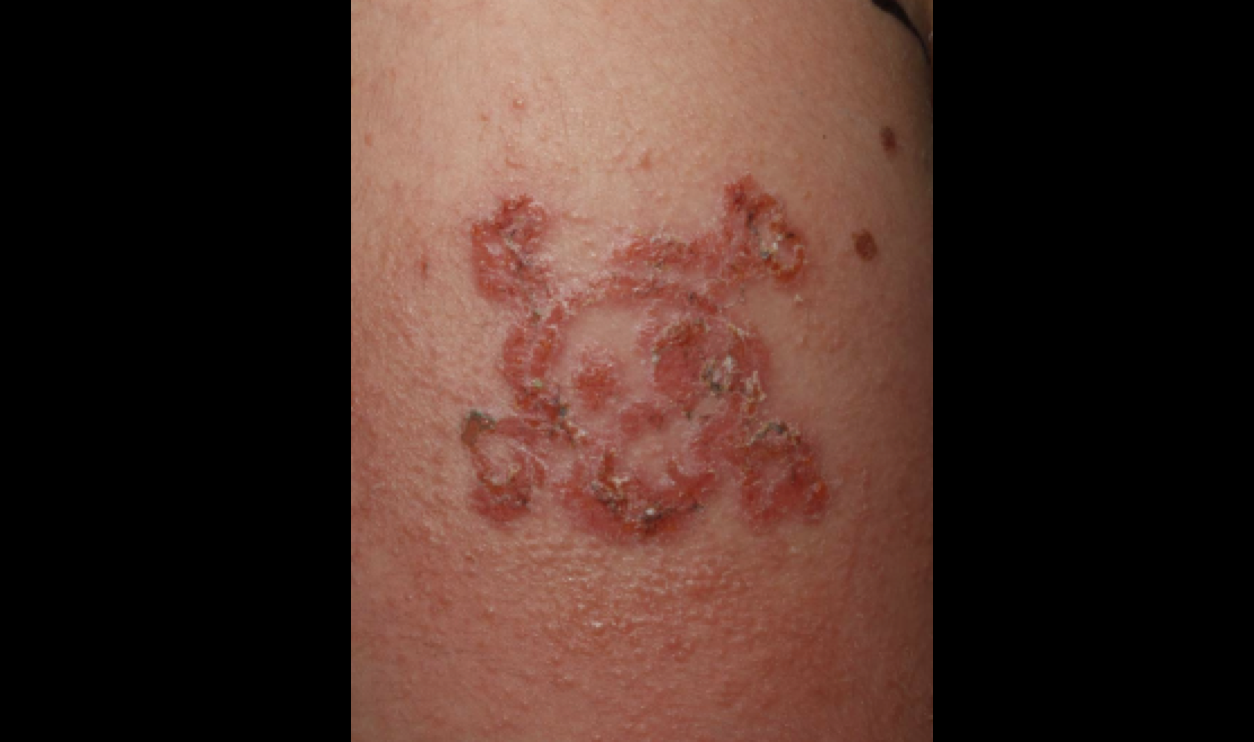Black Henna Tattoos Can Cause Severe Skin Reactions, Case Shows

A British boy who got a temporary tattoo while on vacation in Spain came home with an unusual souvenir from his trip: a severe allergic reaction to his body art, a new case report shows.
The 10-year-old got a temporary "black henna" tattoo on the upper part of his arm in the summer of 2015, but the ink caused his skin to erupt in a rash four days after he received the tattoo, according to a report of the boy's case published today (May 5) in the journal BMJ Case Reports.
"Black henna" tattoo ink is typically a combination of henna, a relatively safe plant pigment that has a reddish-brown color, and a chemical called para-phenylenediamine (PPD). This textile dye is added to blacken the henna and make the tattoo dry quicker and last longer, the case report said.
PPD is known to cause allergic reactions when it comes in contact with the skin, said Dr.Jaya Sujatha Gopal-Kothandapani, a researcher in pediatric endocrinology at the University of Sheffield in England, who was involved in the boy's case.
The boy developed redness, an itchy rash and blistering on the outline of the tattoo, which are typical symptoms of an allergy, Gopal-Kothandapani said. Before this incident, the boy had not suffered from any allergies, nor had members of his family, Gopal-Kothandapani said. [8 Strange Signs You're Having an Allergic Reaction]
An allergic reaction to PPD, a chemical commonly used in hair dye, is relatively rare in children compared to adults, Gopal-Kothandapani said. But children who are sensitive to PPD can have a more intense and severe allergic reaction than adults, she said.
Black henna tattoos are quite unsafe, and the inks can have levels of PPD in them as high as 30 percent, Gopal-Kothandapani told Live Science. PPD is currently only approved for use in hair dyes only at a 6 percent concentration, and neither the U.S. nor Europe permits PPD to be used in any skin product at any concentration, she said. The inks used may be marketed as "black henna" and applied by street artists, who may or may not know it's risks on the skin and are using it illegally.
Sign up for the Live Science daily newsletter now
Get the world’s most fascinating discoveries delivered straight to your inbox.
The U.S. Food and Drug Administration has received numerous reports from consumers who developed bad side effects — blisters, loss of skin pigmentation, sensitivity to sunlight and permanent scarring — as a result of the PPD found in black henna, according to the FDA's adverse-events reporting program.
Black henna dangers
Getting a temporary tattoo while traveling abroad might seem like a fun way to briefly remember the trip, and it may seem safer than a permanent inking. But just because a tattoo is temporary does not mean it can't be harmful to some people.
The British boy had the rash for three weeks before he sought help for it, according to the case report.
In addition to a bad allergic reaction, the boy's temporary tattoo caused him to develop cellulitis, a potentially serious bacterial skin infection. This made his arm swollen, hot and painful when touched, Gopal-Kothandapani said.
The 10-year-old was admitted to the hospital and put on intravenous antibiotics, which helped resolve his symptoms of cellulitis within 48 hours, Gopal-Kothandapani said. A cream containing a mixture of steroids and antibiotics was applied to the outline of the tattoo to reduce inflammation and relieve itching, Gopal-Kothandapani said.
A week after the boy completed his treatment, his skin remained slightly lighter in the place where the tattoo had been, but he had no scarring and he recovered fully from the incident, Gopal-Kothandapani said.
Now that the boy knows he is allergic to PPD, he needs to avoid black henna products, such as hair dyes, in the future, Gopal-Kothandapani said. The child's reaction to PPD dye may also have left him more sensitive to other chemicals, such as black clothing dye, black rubber and PABA sunscreens, she explained. These chemicals are similar enough to PPD to trigger the same reaction, Gopal-Kothandapani said. [Got Allergies? Avoid These 7 Mistakes]
Because of black henna's potentially dangerous side effects, artists who perform skin painting should not use the substance in temporary tattoos, she said. But some vendors and many consumers may be unaware of these safety concerns, Gopal-Kothandapani said.
She explained that there are clear differences between black henna and the harmless variety. Natural henna paste is greenish in color, smells natural and is considered safe to use on the skin, where it will leave a deep maroon stain. Black henna paste, by contrast, is jet-black, smells like a chemical, stains quickly and may burn the skin, she said.
Follow Live Science @livescience, Facebook & Google+. Originally published on Live Science.
Cari Nierenberg has been writing about health and wellness topics for online news outlets and print publications for more than two decades. Her work has been published by Live Science, The Washington Post, WebMD, Scientific American, among others. She has a Bachelor of Science degree in nutrition from Cornell University and a Master of Science degree in Nutrition and Communication from Boston University.










